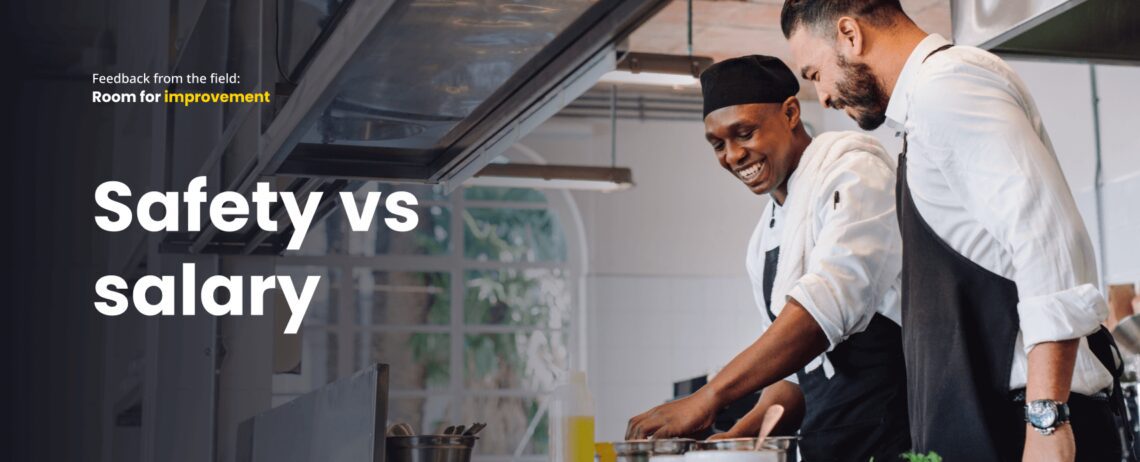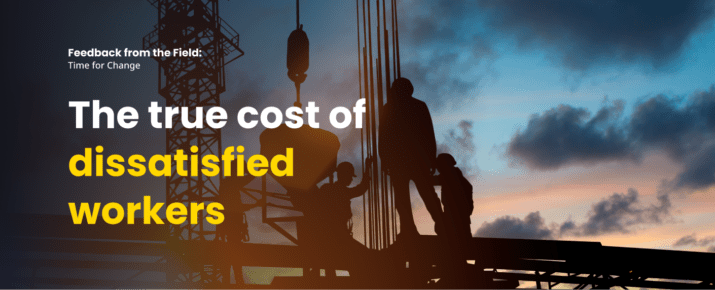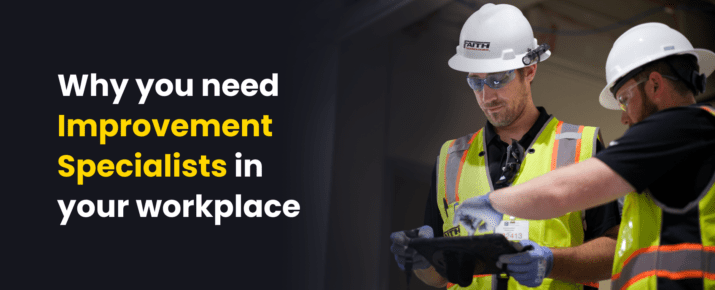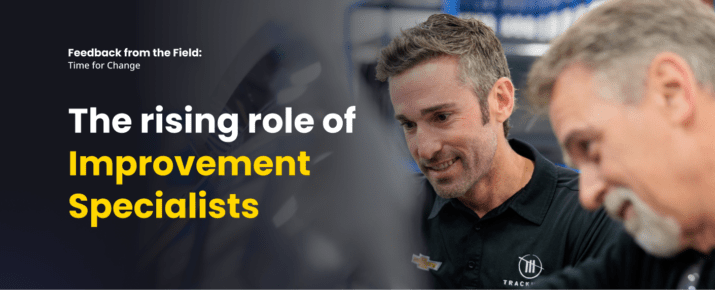The surprising thing frontline workers care about (even more than pay)
Feedback From The Field | World Of Work | By | 20 Nov 2023 | 5 minute read

With the ongoing cost of living crisis, it makes sense that most workers are concerned with fair pay. A dollar simply doesn’t stretch as far as it used to.
But even with skyrocketing prices, there’s one issue that carries even more importance for frontline workers: safety.
Safety over salary: What frontline workers actually want
Safety is one of the bottom tiers of Maslow’s Hierarchy of Needs, a psychological model that’s often adapted to the working world. In fact, safety ranks behind only physiological needs like air, water, food, and shelter.
Our own report, ‘Feedback from the Field: Room for Improvement’, conducted in partnership with YouGov supports Maslow’s model. Frontline workers place a high priority on their own job safety – even putting it ahead of a higher paycheck. If forced to find a new job, workers would prioritize safety over a better salary:
- 37% of respondents say they’d choose a job with a similar salary and level of risk
- 28% say they’d choose a job with a similar salary and lower level of risk
But would higher pay lure them to a higher-risk job? Not necessarily. Only 22% of workers say they’d choose a job that offers a higher salary, but also has a higher level of risk, proving that the dollars don’t totally compensate for the danger.
When you break this down by age, the oldest generation of workers in the survey – Baby Boomers – were the most likely to play it the safest. Only 11% of them chose the high-salary, high-risk option.
Younger workers are still cautious, but a little more likely to take the risk than Baby Boomers. Meanwhile, 28% of Gen Z workers, 29% of Millennials, and 23% of Gen X workers say they’d take the riskier job with higher pay.
But even so, most workers aren’t jumping at bigger salaries if it means a bigger threat to their personal safety. The data shows they want the same level of risk or even lower risk than their current jobs — even if it means sticking with the same pay.
“We empower our drivers to call a timeout if something doesn’t feel safe. [Alerts] go to me, our safety director, and all the top operations leaders. Our goal is to call that driver before they leave to say thank you for pointing this out, and to get more information. It’s an all-hands-on-deck [operation] for something that hasn’t happened yet.”
Kyle Close, Vice President of Operations, North America, Brenntag
Safety as a selling point: How to meet workers’ safety needs
The data doesn’t lie: If you want to keep your current frontline workers and attract new ones, you need to emphasize safety. Here are three ways to help employees feel respected, supported, and most importantly, protected.
1. Empower workers with a voice
Your frontline workers are the ones doing their jobs day in and day out — and that means they understand what’s safe and what’s not better than you do.
One of the best ways you can show workers that you’re prioritizing their safety is to give them regular opportunities to voice concerns and share feedback. That might sound time-consuming and difficult to scale, but a mobile-first operations platform like SafetyCulture can help you get full visibility into your business while also giving employees an easy way to voice concerns.
In our recent survey, 62% of workers say they’d be likely to use an app that gives them access to the right information at the right time and allows them to easily share what’s working and what’s not. That includes 35% who say they’d be very likely to use that type of app.
Our survey also shows that 49% of workers believe the best ideas for operational improvements come from the actual workers in the field (compared to only 23% of workers who think the best ideas come from management); opening the door in this way gives you real insights into what safety issues need to be addressed.
Plus, this strategy has the added bonus of making employees feel included, supported, and valued. And when 60% of workers believe their views and opinions are ignored by their employers, this level of listening is a competitive advantage for recruitment and retention.
2. Offer competitive hazard pay
Safety takes the cake, but that doesn’t mean that pay is unimportant. It’s still a crucial consideration for frontline workers, particularly when our survey showed that the cost of living is the top concern among frontline employees
Providing hazard pay is a way to recognize the inherent risks and physical demands that come with a dangerous job. It garnered a lot of attention among frontline workers during the pandemic (although, many companies ended hazard pay well before the actual risk was over or minimized).
With the right amount and the right timing, this additional compensation can make frontline workers feel even more supported and appreciated for the difficult and treacherous work they do.
However, keep in mind that hazard pay is a complement, not a substitute. It’s a way to recognize the risk of frontline workers on top of providing adequate safety precautions, training, equipment, and resources — not instead of those things.
3. Continue to iterate and improve
You might think that your organization has a solid grasp on safety measures right now, but things are always changing. New team members, new technology, new processes, new equipment, or new products are shifts in your organization that could turn existing safety procedures on their heads.
For that reason, commit to safety as an ongoing process and not a one-time initiative. This speaks to the value of having open communication and candid feedback from your workers, so that you can continuously make strategic plans and improvements to training, equipment, protocols, and communication.
When our survey shows that 65% of workers believe that at least a few injuries in their workplace or industry could have been prevented with better training and work instructions, treating safety as a learning process instead of a box to check can keep your organization at the top of its game.
Did you know? You can instantly send quick-fire messages (i.e. video, images, or PDFs) to your network of employees – no matter where they are. Learn about Heads Up.
Safety is a basic, not a bonus
Frontline jobs are demanding – oftentimes physically, mentally, and emotionally. And if workers are going to put it all on the line to benefit your organization, the data shows that they need to know you quite literally have their back.
Does pay still matter? Of course. But remember that the paycheck demonstrates to employees that you value them as a worker — prioritizing their safety shows that you value them as a person.
*About the research
All figures, unless otherwise stated, are from YouGov Plc. Total sample size was 2,057 adults (769 UK, 757 US, 531 Australia). Fieldwork was undertaken during June 2023. The survey was carried out online. The figures have been weighted and are representative of US, UK, and AU frontline workers (aged 18+).
Read more Feedback from the Field articles:
- Upskilling frontline workers – here’s how to do it right
- Speaking up and taking action: How to empower frontline workers
- Frontline workers are excited about AI – here’s how to build on it
Important Notice
The information contained in this article is general in nature and you should consider whether the information is appropriate to your specific needs. Legal and other matters referred to in this article are based on our interpretation of laws existing at the time and should not be relied on in place of professional advice. We are not responsible for the content of any site owned by a third party that may be linked to this article. SafetyCulture disclaims all liability (except for any liability which by law cannot be excluded) for any error, inaccuracy, or omission from the information contained in this article, any site linked to this article, and any loss or damage suffered by any person directly or indirectly through relying on this information.





